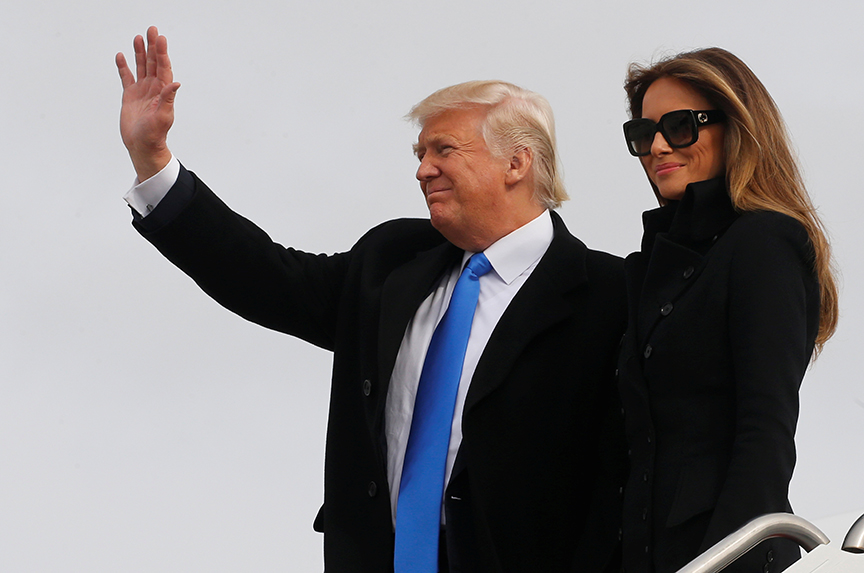In order to effectively address the growing tensions posed by North Korean nuclear capabilities, Washington needs a comprehensive strategy that will include a range of efforts, including, importantly, strengthened homeland missile defenses.
Last week, US President Donald J. Trump, referring to the North Korean missile threat, claimed that “we have missiles that can knock out a missile in the air 97 percent of the time, and if you send two of them, it’s going to get knocked out.” This comment led to a flurry of criticism of the president’s statement and of US missile defense policy in general. However, the critics, who point to technical problems and high costs and oppose improved missile defenses, miss the mark. The president’s statement is technically accurate, and homeland missile defense is essential to US defense strategy toward North Korea.
The threat from North Korea’s missiles are real. According to some estimates, North Korea has dozens of nuclear warheads and may have intercontinental ballistic missiles (ICBMs) capable of reaching the continental United States. This is only the third potential US adversary, after Russia and China, to acquire the ability to threaten nuclear war against the US homeland. This capability poses a number of threats to US interests.
With the US homeland now at risk, allies in Asia may question whether the United States is still willing to extend deterrence to Asia. Such doubt may weaken US alliances in the region and potentially cause regional partners, such as South Korea, to take unilateral steps, such as building their own nuclear weapons capabilities, that would be contrary to US interests. Emboldened by this shift in the balance of power, North Korean Leader Kim Jung Un may believe that he can deter US intervention on the Korean Peninsula, causing him to behave more aggressively in East Asia, undermining regional stability. Finally, there is a real risk of nuclear war. This latter threat should not be exaggerated, but in crises between the United States and a nuclear-armed North Korea there is always the danger that the situation could spin out of control.
US homeland missile defense plays a key role in countering all of these threats. In the worst-case scenario of a North Korean nuclear attack, US missile defenses can protect the US homeland, preventing nuclear detonations on US soil and saving American lives. Most importantly, however, missile defenses contribute to deterrence to forestall an attack before it takes place. Kim Jong Un, seeing that the United States has effective defenses, will be less inclined to launch an attack that will likely fail. In addition, US allies, such as Japan and South Korea, will be assured that Washington can still defend them in a regional conflict if Washington is less concerned about the vulnerability of the US homeland.
In recent days, however, many critics have responded to Trump’s comments with major objections, leading some to question the value of missile defense for dealing with the North Korean challenge altogether. In particular, critics point to test data showing that the probability of a single missile defense interceptor engaging an incoming warhead is closer to 50 percent, not 97 percent as the president claimed. In addition, they charge that the United States has spent too much on these programs, shelling out billions of dollars for ineffective systems. Therefore, a number of critics argue, Washington should abandon missile defense efforts and focus on other measures to address the threat posed by North Korea’s nuclear capabilities. Others go further to argue that reliance on missile defense could be dangerous by incentivizing Washington, Pyongyang, or both to try to strike first.
These criticisms, however, are misguided. Missile defenses do not need to be impenetrable to serve national security interests. Even a partially effective system contributes to deterrence and defense. After all, a system with a 50 percent success rate provides more protection than leaving oneself completely vulnerable to nuclear attack and coercion. These odds are high enough to change the equation for an enemy contemplating a successful nuclear attack.
Moreover, Trump’s calculations are roughly correct. This is because the United States would likely launch multiple interceptors at each incoming missile. As even critics acknowledge, the probability of at least one of four interceptors, each with a 50 percent success rate, engaging an incoming missile is roughly 97 percent.
Finally, the problem with US homeland missile defense is not that the United States has spent too much, but the opposite. Since the late 1990s, homeland missile defense has consistently been recognized as a national priority. After all, what is a more important national security interest than protecting the country from strategic attack? However, unfortunately, this priority has not been reflected in the national budget. Over the past ten years, for example, spending on US homeland missile defense has actually decreased by roughly 46 percent from $3.7 billion to $2 billion. Given recent developments in the North Korean threat, the spending cuts on missile defense over the past decade look particularly irresponsible.
Fortunately, Trump has announced that his administration will pursue a “state of the art” missile defense system. Better late than never. Making homeland missile defense a priority consistent with the supreme importance of the mission is long overdue.
Matthew Kroenig is a nonresident senior fellow in the Scowcroft Center for Strategy and Security and an associate professor of government and foreign service at Georgetown University. You can follow him on Twitter @kroenig.
Image: US President-elect Donald Trump and his wife, Melania, arrived aboard a US Air Force jet at Joint Base Andrews, Maryland, on January 19. (Reuters/Jonathan Ernst)
